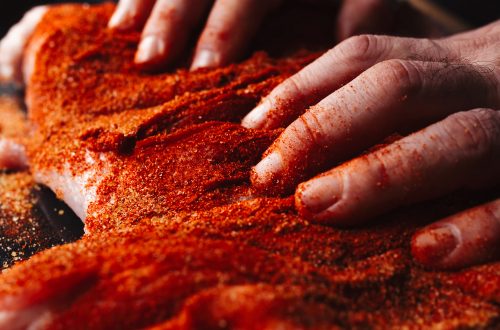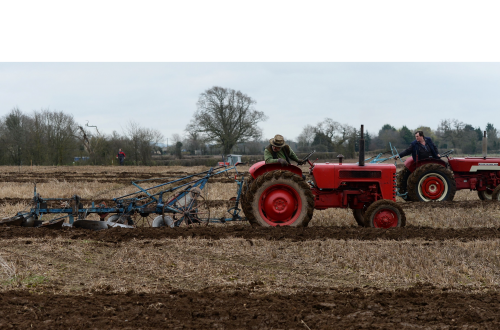
The Treasures of Portuguese Cuisine
You’d think that a cuisine that was influenced by the Roman Empire for seven centuries, was enriched by invading Arabs, had a continuing role in the spice trade, and drew influence from South America would be better known among North Americans. After all, this is the same cuisine that introduced vindaloo to India, was responsible for the tempura technique in Japan, and influenced Cantonese cooking. But now Portuguese cooking is having its day, according to the weekend Wall Street Journal. The reason: a series of fashionable restaurants have been achieving rave reviews in New York, Boston, and Los Angeles.
The history of Portuguese foods helps me understand the basis of this facinating cuisine and its traditions. Waves of invaders left their footprints. Phoenicians planted the first vineyards; Greeks established olives and olive oil, wheat, and honey; Celts raised pigs; and the Romans added more vineyards, olive trees, and wheat. The Arab occupation linked the country to both new fruits and vegetables, but also to spices. About the same time, Portugal traded with the Vikings: salt for cod. But Portugal’s development of the sailing caravelle, which enabled early explorations in the 1400s and 1500s to Africa and the spice trade, clearly enriched the foods of the region.
Portuguese cuisine begins with a wealth of soups: vegetable soups, bean soups, fish soups, poultry soups, and meat soups. Some of the oldest traditions such as canja, a chicken and rice soup with English peas, date from medieval times. Of the many fish soups, cod is a mainstay. The Portuguese have been consuming cod from the North Atlantic for millennia, thanks to its low cost and easy transport. Thus, you’ll find hundreds of recipes for bacalao, Portuguese salt cod.
Agricultural bounty
Maybe we don’t know it very well because the topography of Portugal – rugged mountains and wide rivers – has resulted in a cuisine that is fragmented due to communications and transportation hindrances. The north harbors small family farms and vineyards as well as the center of port production. Northern inland regions feature areas where sausages and air-cured ham are produced. The mountainous central region is home to honey, cheese, and olive oil. And the Alentejo – land south of the Tagus River – is the country’s breadbasket, with olives, almond groves, cork trees, wheat fields, and vineyards. Culinary differences between inland, mountain, and coastal areas are marked. Thus, you’ll find more seafood dishes close to the long coastline but more pork, lamb, and goat dishes inland. In the north, you’ll find many dishes using chestnuts, which grow abundantly there.
Today, Portugal has melded some of these different styles. You’ll find the small clams – ameijoas – in any number of dishes. I’ve enjoyed pork and clams (pictured above), Alentejo style, both at home and in Portugal. The dish is a delicious combination of pork, small clams, cloves, paprika, white wine, bay leaves, onion, parsley, and tomato puree. It’s typically cooked in a cataplana, a copper cooking vessel in the form of two bowls hinged together like a giant clamshell.
Legacy of seafaring
Closer to the coast, fish and seafood are amply available. With its history of seafaring, Portugal has a well-developed fishing industry, not to mention the highest fish consumption per capita in Europe. You can get fish stewed, grilled, poached, fried, or stewed. Though cod is ubiquitous, hake is the favored fish, though you’ll find fresh sardines, bass, snapper, and swordfish as well as squid, crabs, shrimp, and lobster along with clams, mussels, oysters, and scallops on the menus.
If you’re tempted to try your own Portuguese dishes, here are some thoughts. How about a big bowl of caldeirada de mariscos, a fish stew? If you can get small clams, here’s a recipe for porco Alentejana. Or how about vinha d’alhos, the dish brought by sailors to India that became vindaloo? And since Portugal is the source of port wine (and the source of the English word for it), how about a Portuguese beef stew with ruby port?
Do you consider yourself familiar with Portuguese cuisine? If you were to choose, would you make your own Portuguese dish or try to find a nearby Portuguese restaurant? Or both?
Please click on the headline to view the blog on the website. You can log in and comment at the end of the blog to share your thoughts and start a discussion, or suggest a topic for Farmboy in the Kitchen.
If you’d like to share the blog, click on the Facebook icon or one of the others. Thanks!





3 Comments
Tracy May
We were trying to think of something different to do with one of the remaining cuts of pork from a half pig we bought at a local farm, and I think the Vinha D’alhos recipe is going to be just the thing. Interesting the recipe you shared is from a Hawaiian cook. I had forgotten about the Portuguese who came to work on the islands during the plantation era. Can’t wait to try it!
Farmboy
And here is a genuine Goan Pork vindaloo recipe for you, just in case. https://greatcurryrecipes.net/2013/05/22/vindaloo-curry-recipe-authentic-goan-pork-vindaloo/
Tracy May
Cool. Thanks.